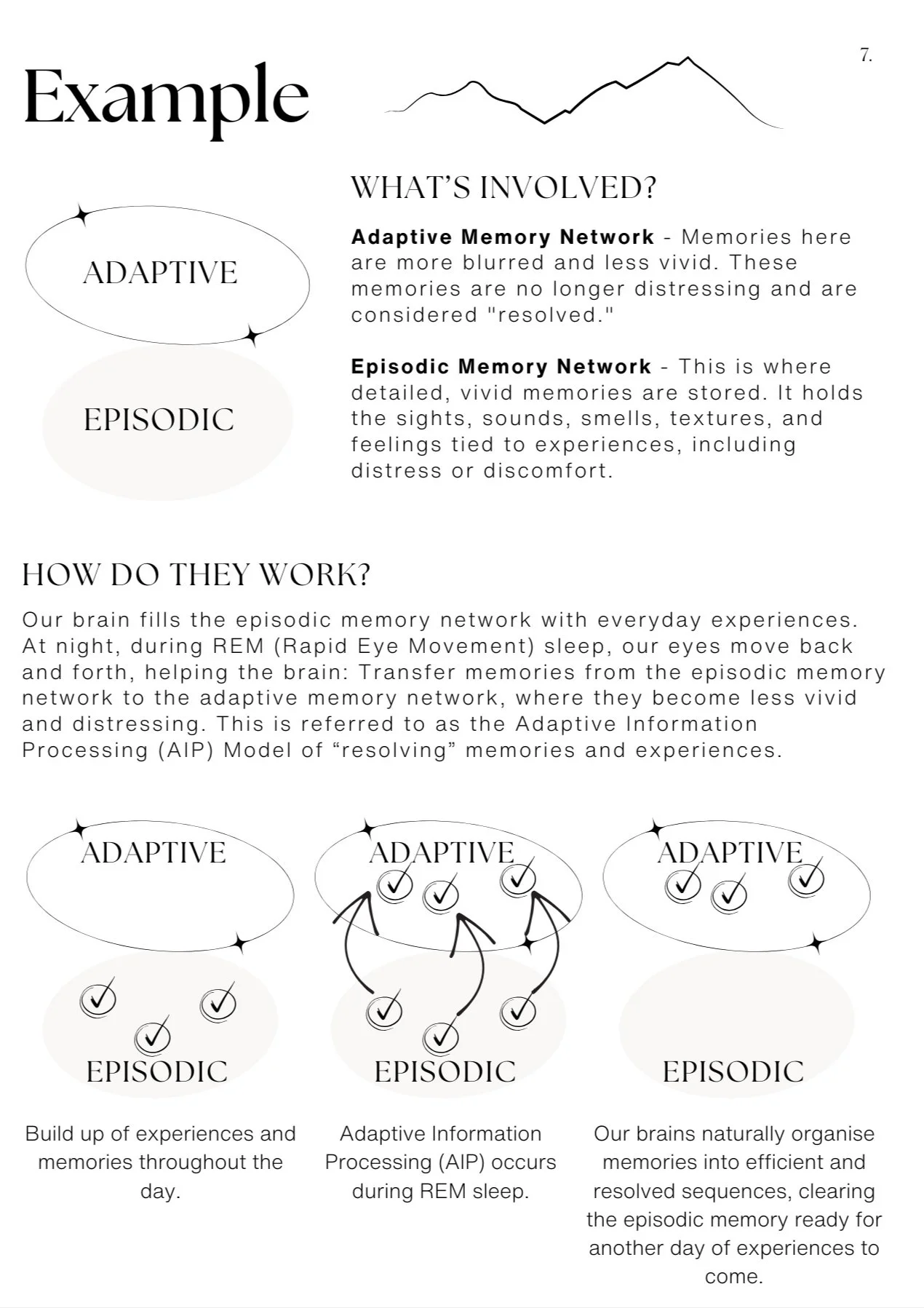
Eye Movement Desensitisation and Reprocessing Therapy
-
✽
Eye Movement Desensitisation and Reprocessing (EMDR) therapy uses guided eye movements to stimulate both sides of the brain, helping to "tax" its working memory while processing and resolving traumatic memories. This approach is based on the idea that bilateral stimulation can reduce the emotional intensity of distressing memories. Whether through in-person psychology sessions or therapy online, EMDR provides a structured therapy process for addressing unresolved trauma.
-
✽
Bilateral stimulation in EMDR doesn’t rely solely on eye movements; it can also involve auditory cues or gentle tactile taps on both sides of the body. These forms of stimulation work to engage both hemispheres of the brain, promoting emotional processing and memory integration.
-
✽
EMDR therapy follows an eight-phase process: history-taking, stabilisation, assessment, desensitisation, installation, body scan, closure, and reevaluation. These phases guide the therapy journey, ensuring clients feel safe and supported as they address their concerns. Professional help with EMDR is tailored to meet individual needs at every stage.
-
✽
EMDR is effective for a range of presenting concerns, including post-traumatic stress disorder (PTSD), anxiety, phobias, and grief. It can also help with self-esteem issues, chronic pain, and other trauma-related conditions. Whether face-to-face therapy or telehealth options, EMDR is an evidence-based treatment that empowers individuals to heal and move forward.
-
✽
Advancements in telehealth have made EMDR accessible through virtual platforms, allowing clients to receive treatment in the comfort of their own homes. Online therapy sessions maintain the integrity of the EMDR process, with therapists guiding bilateral stimulation and the therapy session remotely. This option is especially helpful for those who prefer virtual support or cannot attend in-person psychology treatment.
-
✽
For those seeking to heal from trauma, EMDR offers a structured and effective therapeutic plan. Effective, both in-person and online, the manualised approach tailors itself to be implemented over both mediums. Professional help through EMDR supports a comprehensive treatment plan, helping individuals regain control of their lives and improve their overall well-being.
Comprehensive
Therapeutic
Handouts
Worked examples and psychoeducation handouts
Stabilisation handouts
A Comprehensive Guide for Clients and Clinicians
EMDR therapy is a transformative approach that helps individuals process distressing memories and build resilience. However, navigating the 8-phase process can feel overwhelming for both clients and clinicians. A New Venture: EMDR Booklet for Clients and Clinicians is designed to bridge this gap, providing clear explanations, structured exercises, and practical tools to enhance the EMDR experience.
What’s Inside?
✔ Step-by-Step Breakdown of the 8 Phases
✔ Practical Stabilisation Exercises
✔ Memory Identification & Reprocessing Tools
✔ Common Questions & Misconceptions
✔ Additional Resources & Support






